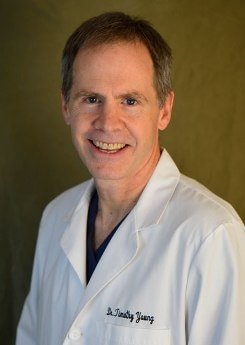Plantar fasciitis is one of the most common foot conditions that people suffer from and it's the number one condition that we see patients for in our office.
Patients with plantar fasciitis will find that they experience many different symptoms, but the tell-tale sign of plantar fasciitis is heel pain first thing in the morning, which normally results in a limp.
There have been many effective treatments for plantar fasciitis. But, it can be recalcitrant to traditional treatments.
Mechanical treatments include:
- stretching
- avoiding going barefoot
- wearing supportive shoes
- prescription orthotics or over-the-counter arch supports
- using a night splint
- taping
Treatments addressing inflammation may include:
- icing
- cortisone injections
- oral anti-inflammatories
- physical therapy modalities such as therapeutic ultrasound and electrical stimulation
Recalcitrant cases may be treated with platelet rich plasma injections, shockwave therapy and surgery. Surgery is usually the last resort and can include plantar fascial release or a gastrocnemius recession.
In November of 2008, Dr. Lucia Sconfienza out of the University of Genoa in Italy gave his presentation on dry needling for plantar fasciitis at the radiological society of North America annual meeting in Chicago. He reported a 95% success rate for treatment of plantar fasciitis with this technique. Since this time, there has been more interest in this approach in the United States. At Issaquah Foot and Ankle Specialists, we have been providing this procedure since December 2008. Our clinic has developed a protocol to accompany this procedure. Ultrasound guidance is used to direct the procedure and ensure that it is safe. The procedure involves repeated probing during the injection that causes microtrauma and some internal bruising. This releases platelets that have associated growth factor and this in turn stimulates the body to heal itself. The procedure itself is actually quite low-cost compared to some of the other alternatives such as shockwave therapy and surgery.




